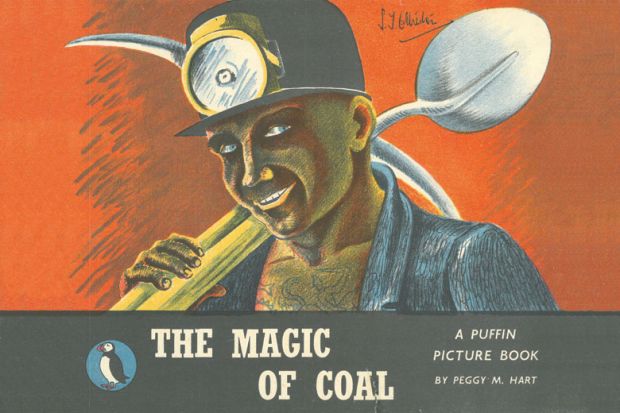“We’re marching towards the morning,/We’re struggling, comrades all,/…/With ordered step, red flag unfurled,/We’ll build a new and better world.” In Left Out: The Forgotten Tradition of Radical Publishing for Children in Britain 1910-1949, Kimberley Reynolds sets out to recover an important era in the history of children’s literature in Britain, the product of a time when international revolution and the devastation of war led artists and writers to imagine the dawning of “a new and better world” through transforming the young people who would become its citizens and leaders. Some, with “red flag unfurled”, were overtly political and allied with Soviet ideology, while others were dedicated to a more home-grown, UK-based radicalism.
Curiously, at a time when both the UK and the US seem to be taking a decided step in the direction of what is being called the alt-Right, a vogue for leftist children’s lit has recently gained strength. A New Childhood: Picture Books from Soviet Russia, this summer’s exhibition of rare Soviet works from the 1920s and 1930s at London’s House of Illustration, is a case in point. The crisp lines, bold colours and radical two-dimensional aesthetic found in these early 20th-century illustrations for children evoke a moment when the avant-garde in both art and literature joined forces to challenge the dominant ideology of capital and class.
Reynolds’ study joins a growing body of criticism focusing on children’s books that have been largely forgotten. A decade ago, Julia L. Mickenberg’s Learning from the Left: Children’s Literature, the Cold War, and Radical Politics in the United States (2006), soon followed by her Tales for Little Rebels: A Collection of Radical Children’s Literature (co-edited with Philip Nel, 2008), galvanised interest in American children’s literature with a radical bent. More recently, collections such as Children’s Literature and the Avant-Garde (2015) explored the international range of such books.
It is in her discussion of “aesthetic radicalism” in Britain that Reynolds is at her most passionate. Although many radical children’s books were openly political in their content, she draws particular attention to the more subtle work accomplished by avant-garde and Modernist writers and artists: “Aesthetic radicalism does different but complementary kinds of work in preparing young readers for the future…It is specifically concerned with stimulating readers to see and think about the fabric of everyday life: the way things look, feel, and affect individuals, and what happens when conventions for seeing and rendering the world are changed.”
Left Out is structured according to the factors Reynolds identifies as giving rise to the movement: “Radical children’s literature was the product of three areas of life in early twentieth-century Britain: left-wing politics, modernist and avant-garde art and design, and progressive education.” Books inspired by the last category reveal most clearly the rewards and risks of this idealising vision. Belief in more open sex education for both boys and girls, for example, introduced new and important conversations to young readers, although a parallel concern for the physical improvement of British “stock” occasionally brought a eugenic strain to some works.
There are minor elements to quibble with, of course: Canadian nature writer Ernest Thompson Seton is identified as Ernest Seton Thompson at one point, and the inexplicable “sic” attached to the Miltonic phrase that one author uses describing a group of girls “almost as instinct (sic) with what is precious in our race” brings the reader up short. Such infelicities aside, Reynolds’ study provides an enticing invitation to explore in greater detail these forgotten children’s books that challenged tradition and imagined the modern world.
Shelley King is professor and head of the department of English language and literature, Queen’s University, Canada.
Left Out: The Forgotten Tradition of Radical Publishing for Children in Britain 1910-1949
By Kimberley Reynolds
Oxford University Press, 272pp, £35.00
ISBN 9780198755593
Published 28 July 2016
POSTSCRIPT:
Print headline: Reds inside the bedtime stories
Register to continue
Why register?
- Registration is free and only takes a moment
- Once registered, you can read 3 articles a month
- Sign up for our newsletter
Subscribe
Or subscribe for unlimited access to:
- Unlimited access to news, views, insights & reviews
- Digital editions
- Digital access to THE’s university and college rankings analysis
Already registered or a current subscriber?






